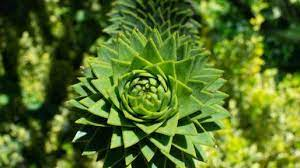What are Fibonacci spirals?
This specific circumstances isn't a remarkable situation. In a research study that analysed 6,000 pinecones, Fibonacci spirals were actually discovered in 97% of the analyzed cones.
Fibonacci spirals are actually certainly not simply discovered in yearn cones. They prevail in various other vegetation body organs like leaves behind as well as blossoms.
If you take a check out the suggestion of a leafed fire, like that of a ape challenge plant, you can easily view the leaves behind are actually organized in spirals that begin at the suggestion as well as slowly wind their method rounded the originate. A research study of 12,000 spirals coming from over 650 vegetation types discovered that Fibonacci spirals happen in over 90% of situations.
Because of their regularity in lifestyle vegetation types, it has actually lengthy been actually idea that Fibonacci spirals were actually old as well as extremely conserved in each vegetations. Our team laid out towards examination this hypothesis along with an examination of very early vegetation fossils.
Non-Fibonacci spirals in very early vegetations
Our team analyzed the plan of leaves behind as well as reproductive frameworks in the very initial team of vegetations understood towards have actually industrialized leaves behind, referred to as clubmosses.
Particularly, our team examined vegetation fossils of the vanished clubmoss types Asteroxylon mackiei. The fossils our team examined are actually currently housed in gallery compilations in the UK as well as Germany however were actually initially acquired coming from the Rhynie chert - a fossil webinternet web site in north Scotland.
Our team took pictures of slim pieces of fossils and after that utilized electronic restoration methods towards visualise the plan of Asteroxylon mackiei's leaves behind in 3D as well as measure the spirals.
Based upon this evaluation, our team found that fallen leave plan was actually extremely adjustable in Asteroxylon mackiei. As a matter of fact, non-Fibonacci spirals were actually one of the absolute most typical plan. The breakthrough of non-Fibonacci spirals in such a very early fossil is actually unexpected as they are actually extremely unusual in lifestyle vegetation types today.
These searchings for alter our comprehending of Fibonacci spirals in property vegetations. They recommend that non-Fibonacci spirals were actually old in clubmosses, overturning the sight that leafed vegetations began expanding leaves behind that complied with the Fibonacci style.
Additionally, it recommends that fallen leave development as well as Fibonacci spirals in clubmosses possessed an transformative background unlike various other teams of lifestyle vegetations today, like ferns, conifers as well as blooming vegetations. It recommends that Fibonacci spirals arised individually several opportunities throughout vegetation development.



